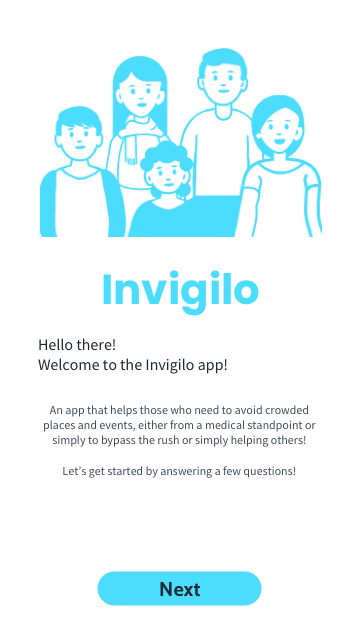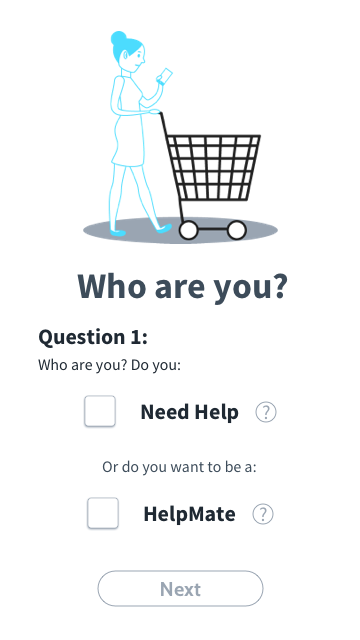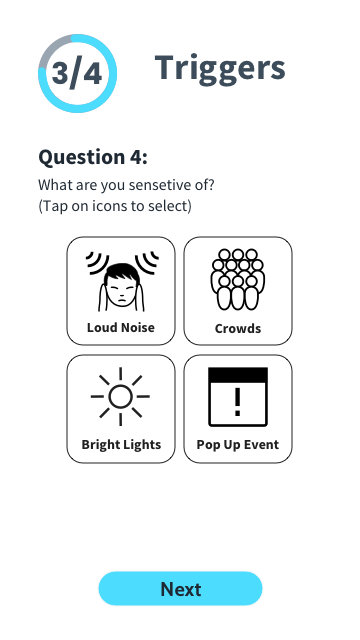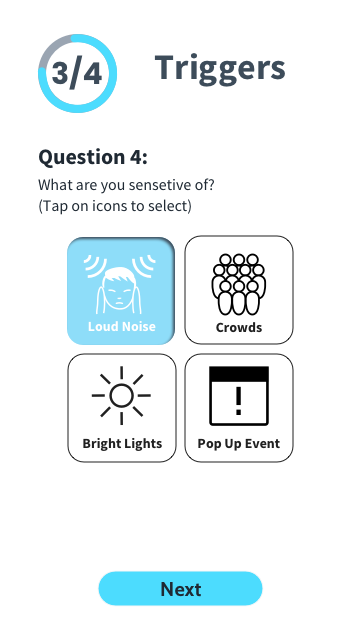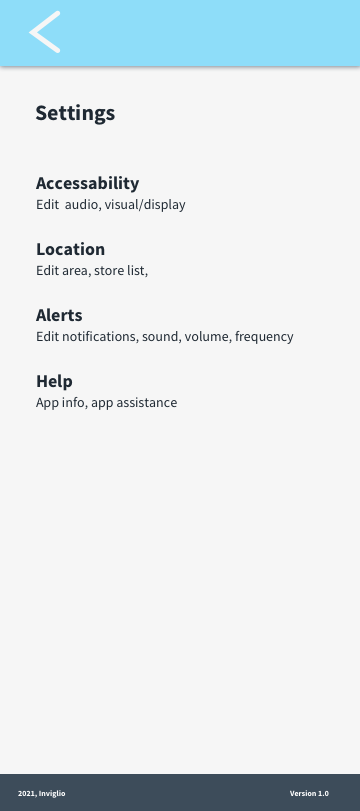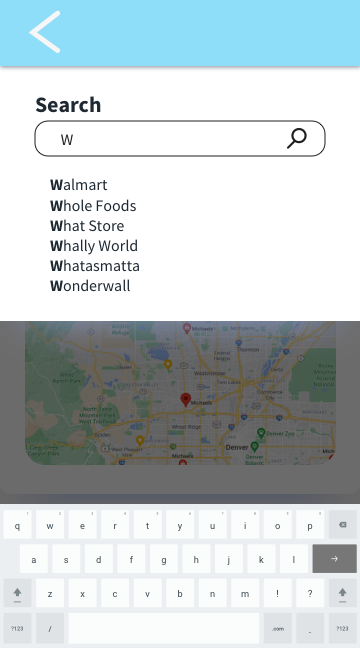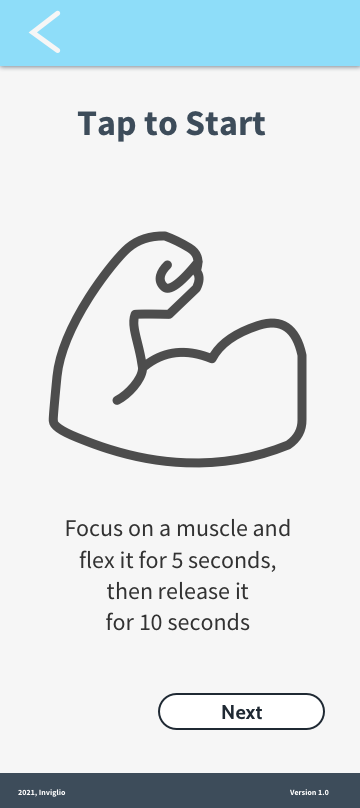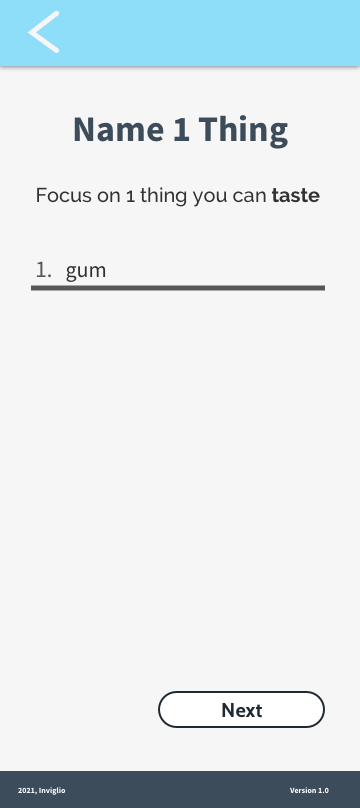Association
This application was a volunteer project. I was approached by a client whose sister struggles with anxiety and panic attacks, especially in public settings.
Challenge
The client wanted a way for a user to relieve themselves from a panic attack or a stressful situation. Since most users use their phones as a social coping mechanism, an application would be compatible.
Although there are plenty of applications like this on the App Store, this one is specifically targeted not only to offer information to help users plan their shopping trips and other outing activities but also to help ease their panic attack if the situation arises.
Although there are plenty of applications like this on the App Store, this one is specifically targeted not only to offer information to help users plan their shopping trips and other outing activities but also to help ease their panic attack if the situation arises.
Team
I was the primary designer, conducting research and interviews while also building the UI and illustrations.
Research
I conducted interviews, surveys, and literature studies to deepen my understanding of users with social and generalized anxiety.
Anxiety disorders are the most common mental illness in the U.S., affecting 40 million adults in the United States age 18 and older.
80% of users interviewed expressed having an anxiety disorder or feeling fear of some sort when shopping.
MHA analyzed data collected between Jan. and Sept. 2020 and reported that more than half a million people have reported signs of anxiety and/or depression since the COVID19 pandemic started. Anxiety screens were up by 634% from January.
1.3% of U.S. adults struggle with agoraphobia, an anxiety disorder that causes fear of situations or places where it's difficult to escape, which can prevent people from entering crowded places like grocery stores.
Out of the number of people surveyed, 65% of users want/need this type of app and believe this will be beneficial for them.
There are other applications that offer an “anti-social network” (Cloak, Split, Hell Is Other People); but there isn't an app tailored to assisting anxiety.
User Interviews
I needed to dive into more qualitative research because it helps with modeling user experiences and inspiring ideas. It’s helping to bring the voice of the customer directly into the design process, and answer critical questions about the goals and behaviors that solutions can support.
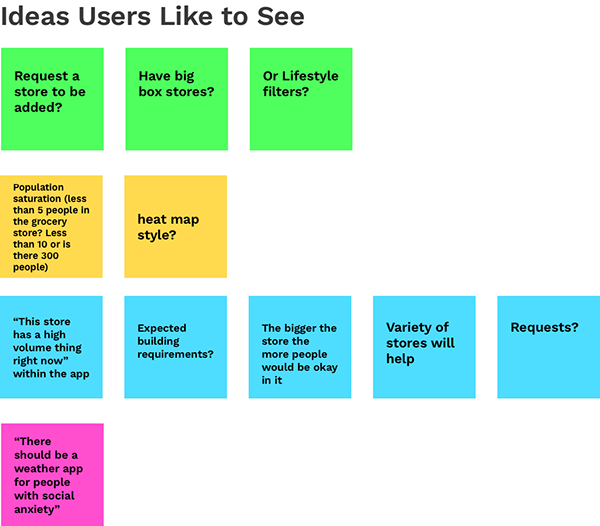
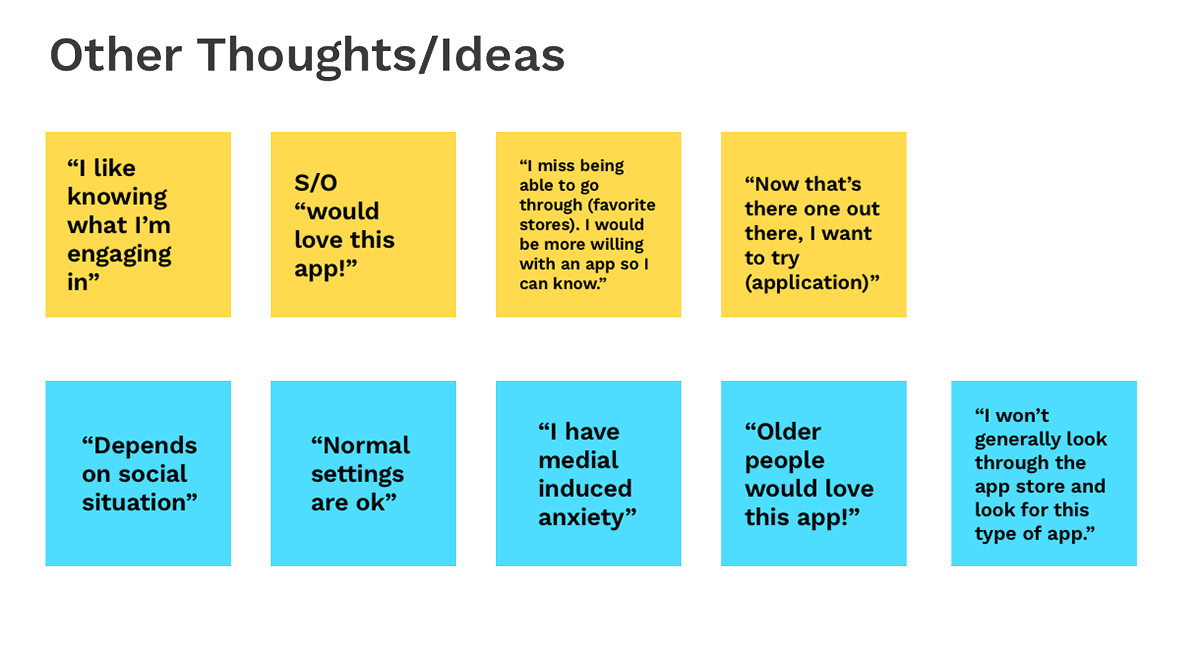
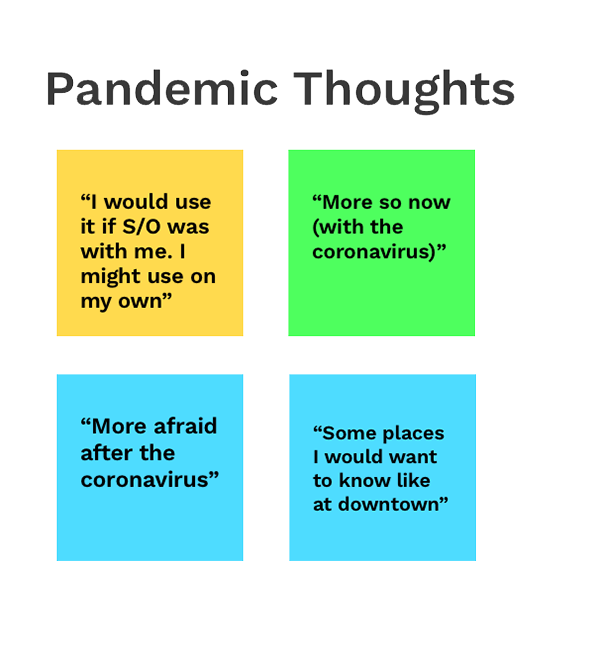
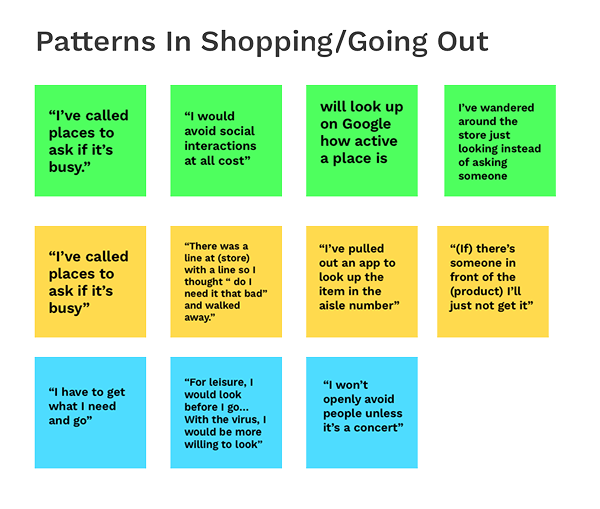
Personas
Brandon
32, Sales Associate, Social Anxiety
Bio: Brandon has social anxiety, so he feels nervous and anxious especially when it comes to his triggers. Even though he works in a retail setting, where he feels like he's more in control, being on his own shopping with his triggers is difficult. He has been able to power through it but at times it can be overwhelming.
Bio: Brandon has social anxiety, so he feels nervous and anxious especially when it comes to his triggers. Even though he works in a retail setting, where he feels like he's more in control, being on his own shopping with his triggers is difficult. He has been able to power through it but at times it can be overwhelming.
Needs: Brandon needs to feel confident and secure when shopping. Wants to feel stress-free when shopping, notably during the pandemic and the holiday season. Also needs to feel like everything is okay. Needs the reassurance that he's not "messing up" or embarrassing himself. And he wants to go in prepared and know what to anticipate.
Dislikes: Loud noises and crowds (big triggers). Similar to autism, social anxiety patients stress when exposed to those types of triggers.
Dislikes: Loud noises and crowds (big triggers). Similar to autism, social anxiety patients stress when exposed to those types of triggers.
Cassie
30, Medical Receptionist, Simply wants to avoid crowds
Bio: Cassie doesn't have any disabilities that prevent her from shopping or experiencing places and events. She is simply stressed and doesn't want to deal with people. Cassie works with people all day and wants to either shop or hang out with friends without the crowds or other annoyances.
30, Medical Receptionist, Simply wants to avoid crowds
Bio: Cassie doesn't have any disabilities that prevent her from shopping or experiencing places and events. She is simply stressed and doesn't want to deal with people. Cassie works with people all day and wants to either shop or hang out with friends without the crowds or other annoyances.
Needs: She wants to be able to shop or attend events without dealing with crowds of people.
Dislikes: Large crowds, traffic, and pop-up events.
Dislikes: Large crowds, traffic, and pop-up events.
Danielle
35, Sales Manager, "Helpmate" Volunteer
Bio: Danielle has experience dealing with special needs patients and wants to help not only family members but others as well. She usually goes on NextDoor and reports about unexpected events, crowded places, and other unexpected occurrences.
35, Sales Manager, "Helpmate" Volunteer
Bio: Danielle has experience dealing with special needs patients and wants to help not only family members but others as well. She usually goes on NextDoor and reports about unexpected events, crowded places, and other unexpected occurrences.
Needs: Wants to help others with their struggles of going out. Needs a quick, easy way to inform people about surprise events or overcrowding at stores and restaurants.
Dislikes: Slow apps, seeing people struggle.
Dislikes: Slow apps, seeing people struggle.
User Stories/Scenarios
Concept
This application has multiple functions to help those in need. First is a “calm” button, which can be activated at any time on the screen (if the user selects “Needs Help” in the onboarding process). Next is a Google Popular Times connection, which shows how busy a store is at a given time based on visits. Then it has a Nextdoor connection, forum, and Alerts about pop-up events or sudden crowds at a store for instance.
Prototyping
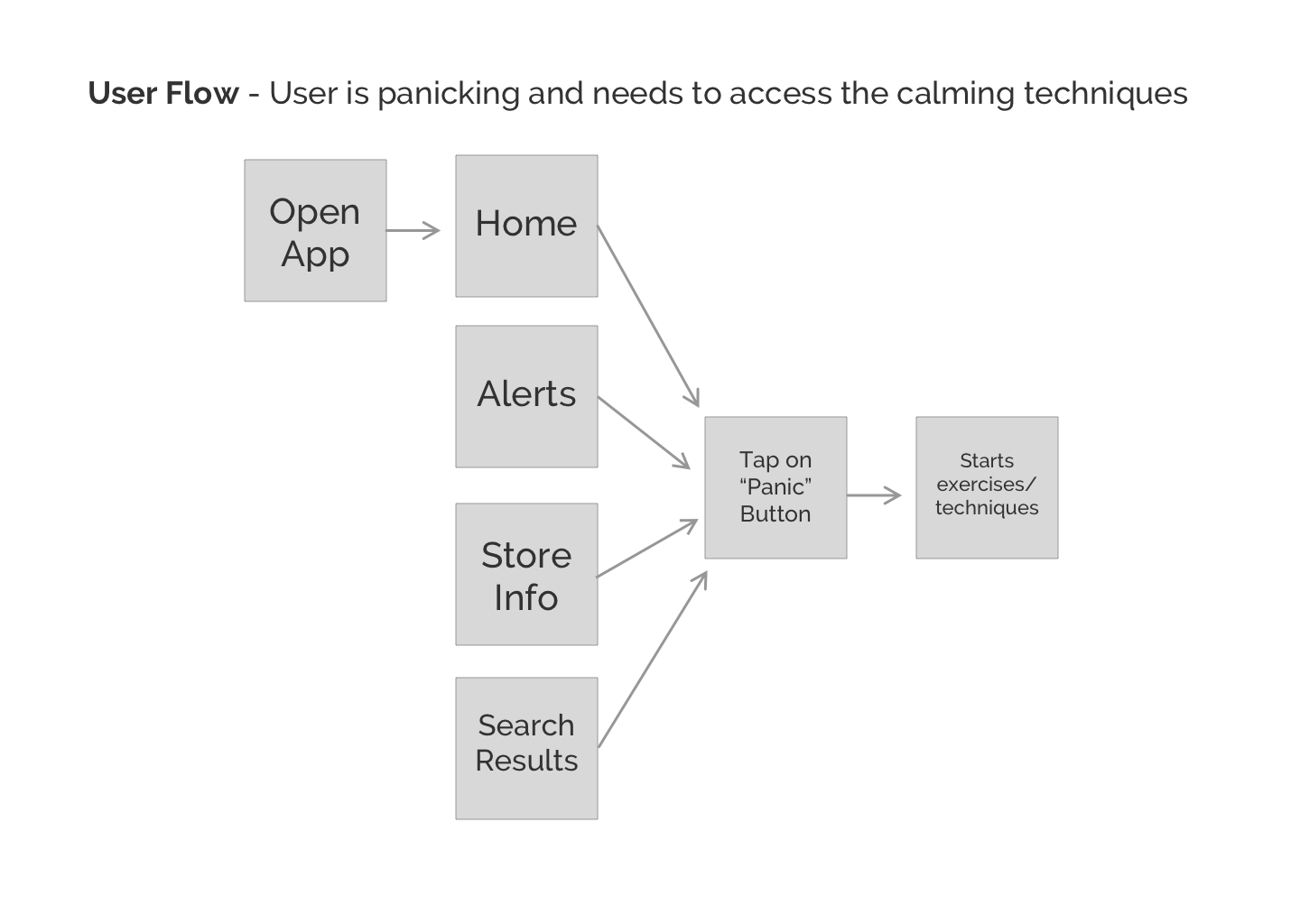
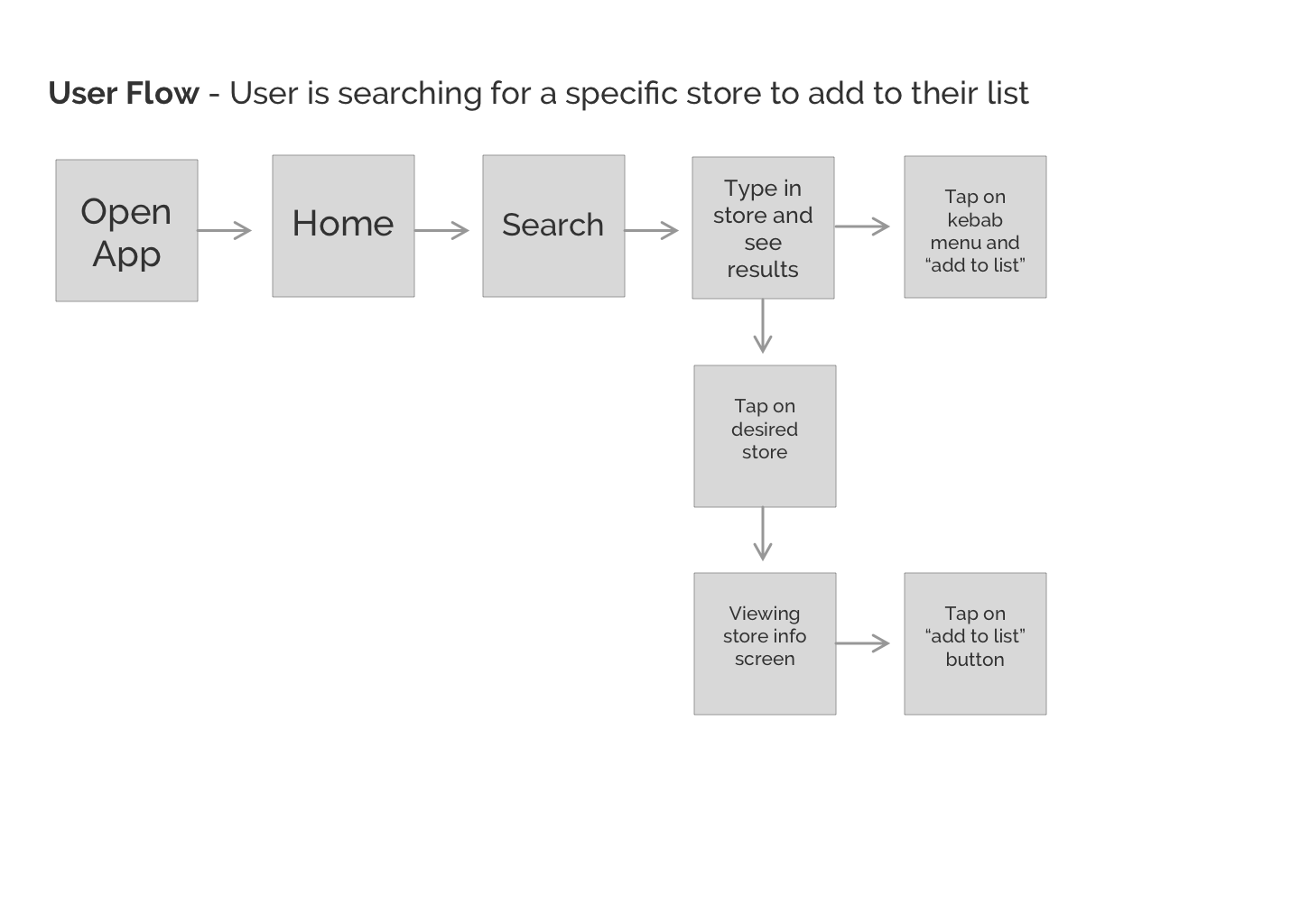
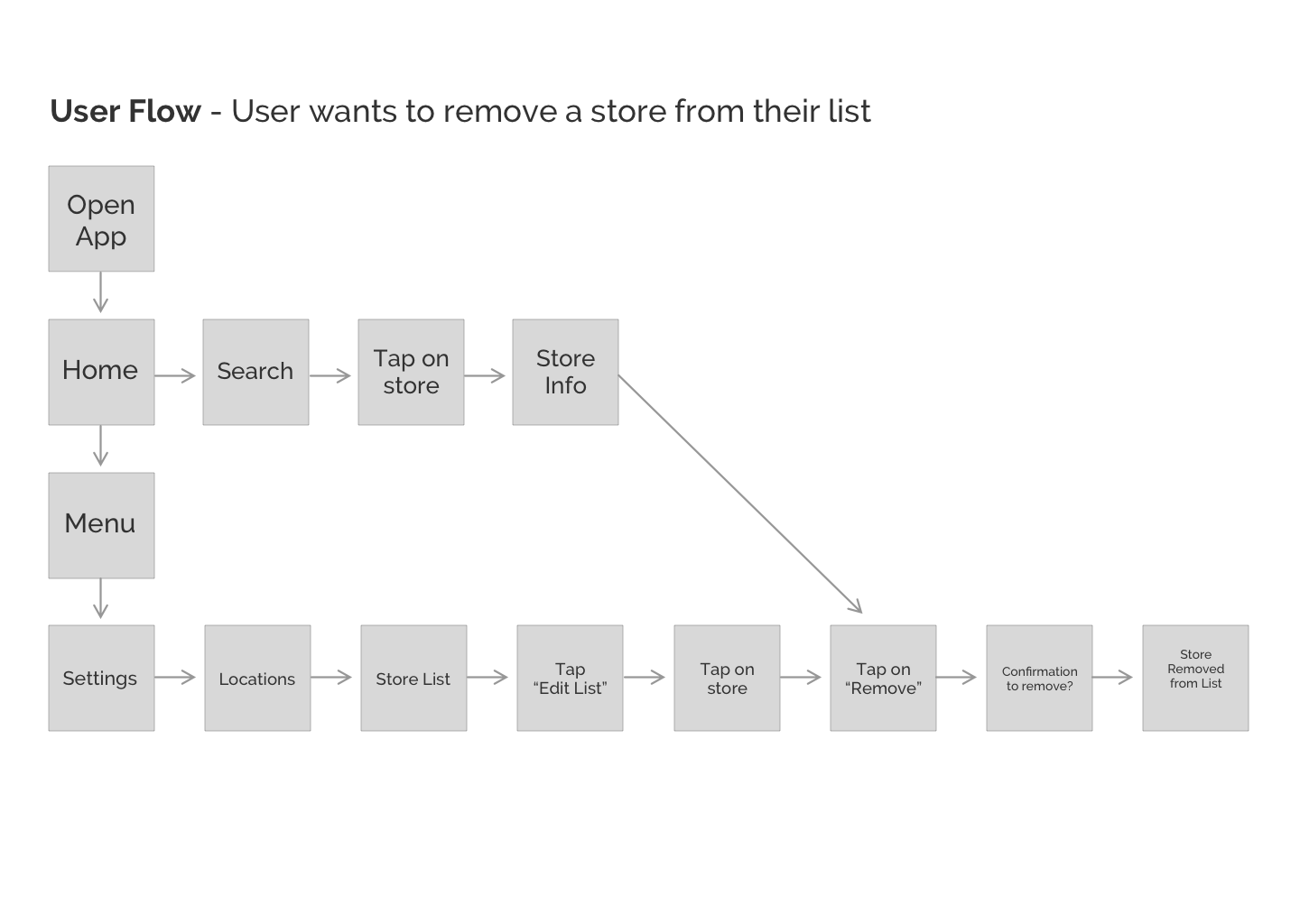
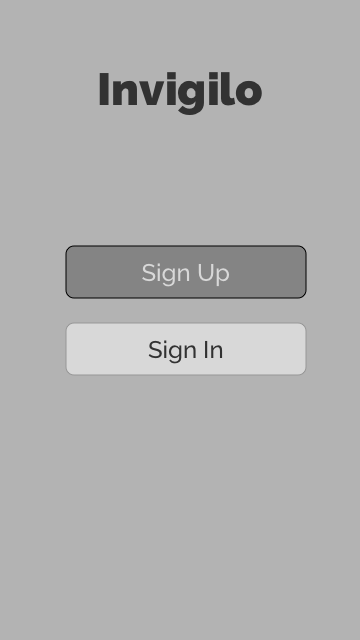
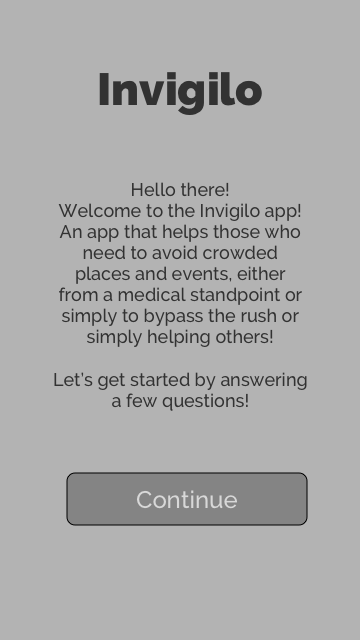
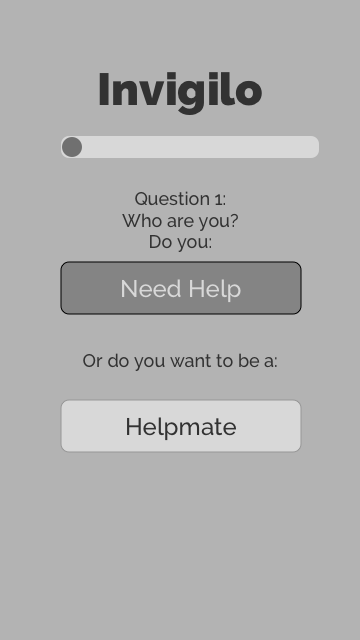
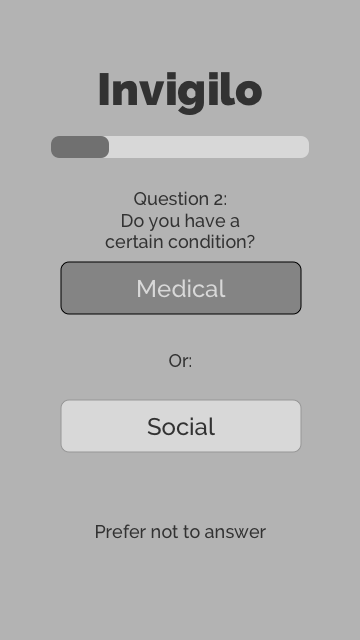
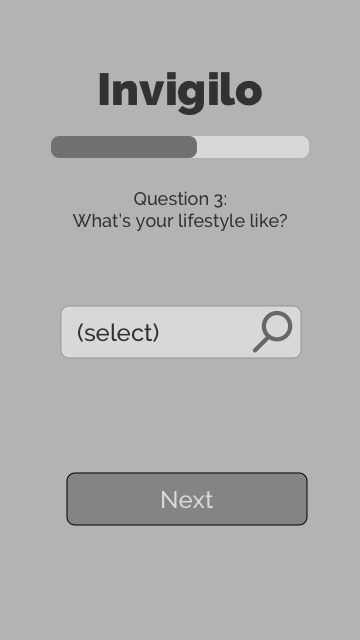
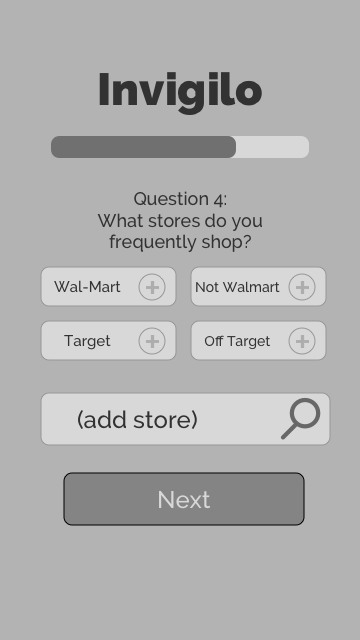
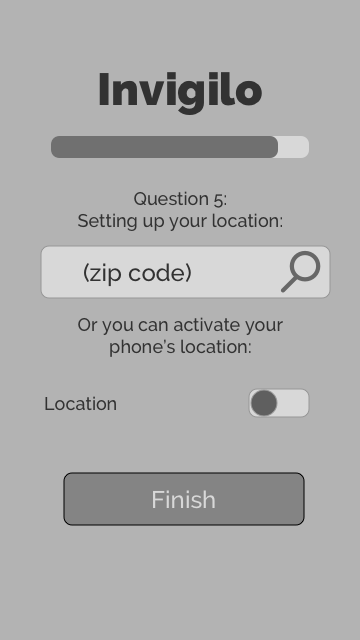

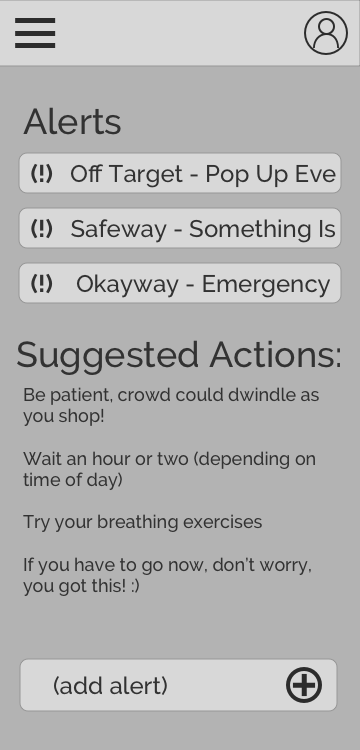
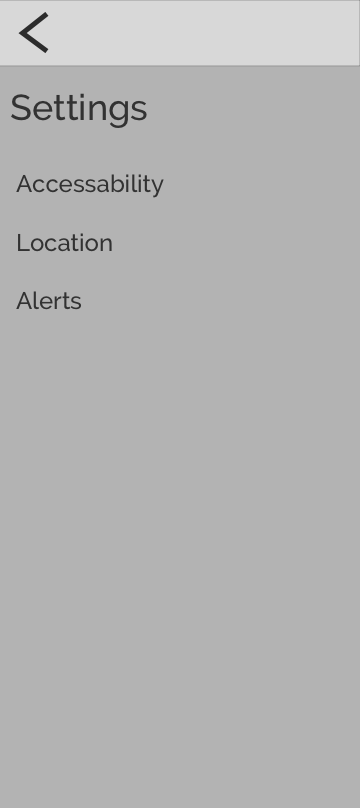
User Testing
When the primary concept and idea were established, I asked people that resembled the targeted personas to test the mid-fidelity prototype.

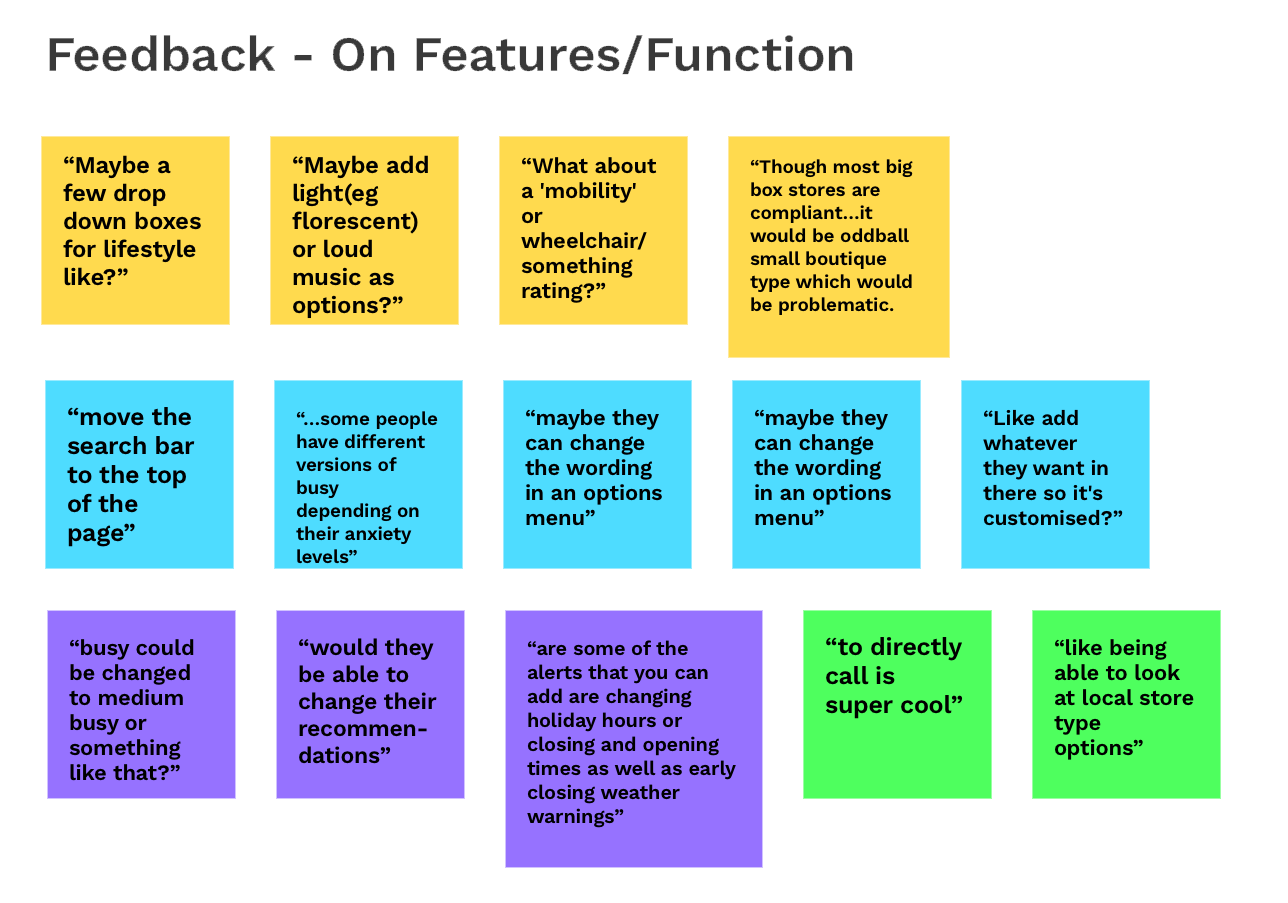
UI Kit
In addition to interviews, surveys, and literature study in order to understand users with social and generalized anxiety, I needed to research the visual aspect and general component as well.
Do...
• Give users enough time to complete the task
• Explain what will happen after completing a task
• Make important info clean
• Give users the support they need to complete the task
• Use a limited color palette to make content easy to read
• Use friendly graphics, icons, and illustrations
• Give users enough time to complete the task
• Explain what will happen after completing a task
• Make important info clean
• Give users the support they need to complete the task
• Use a limited color palette to make content easy to read
• Use friendly graphics, icons, and illustrations
Don't...
• Rush users or set impractical time limits
• Leave users confused about the next steps
• Leave users uncertain about the consequences of their actions
• Make support or help hard to access
• Using harsh color combinations
• Rush users or set impractical time limits
• Leave users confused about the next steps
• Leave users uncertain about the consequences of their actions
• Make support or help hard to access
• Using harsh color combinations
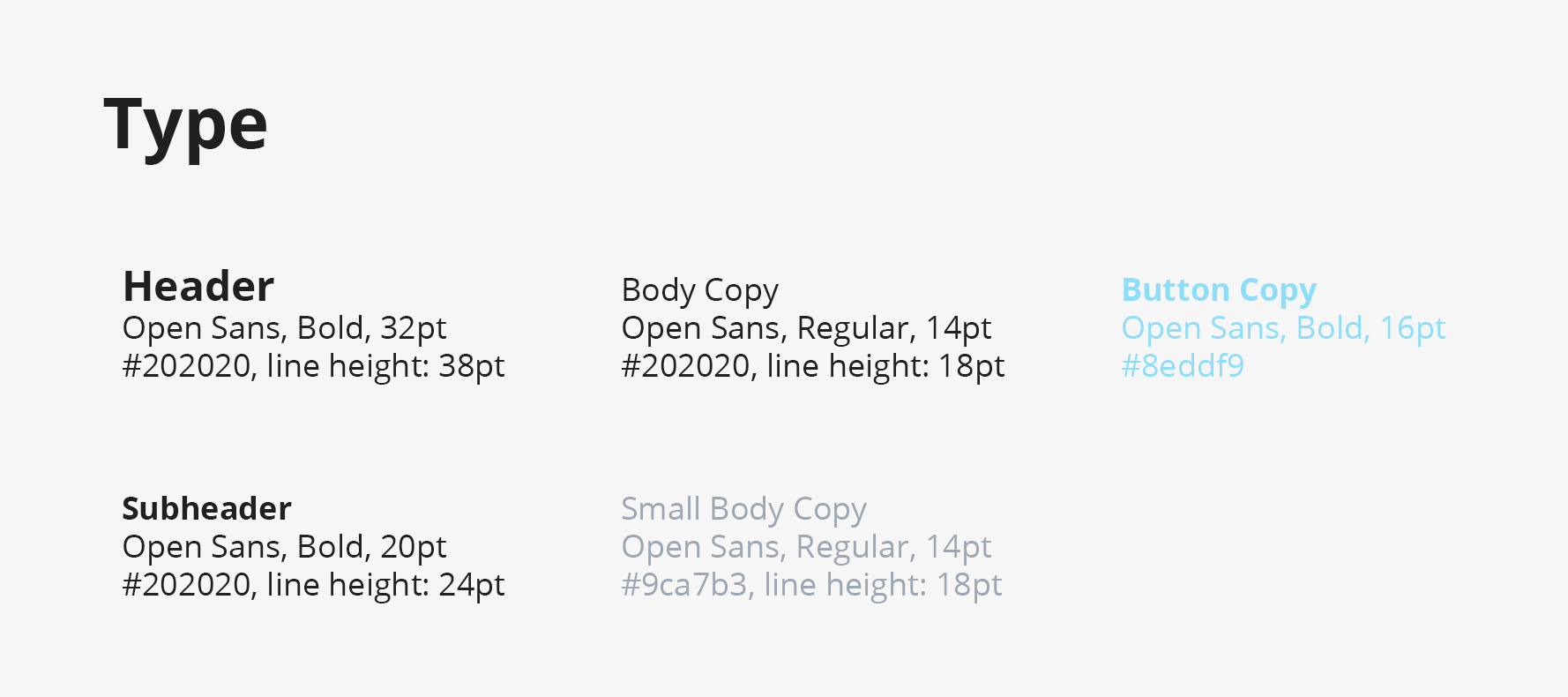
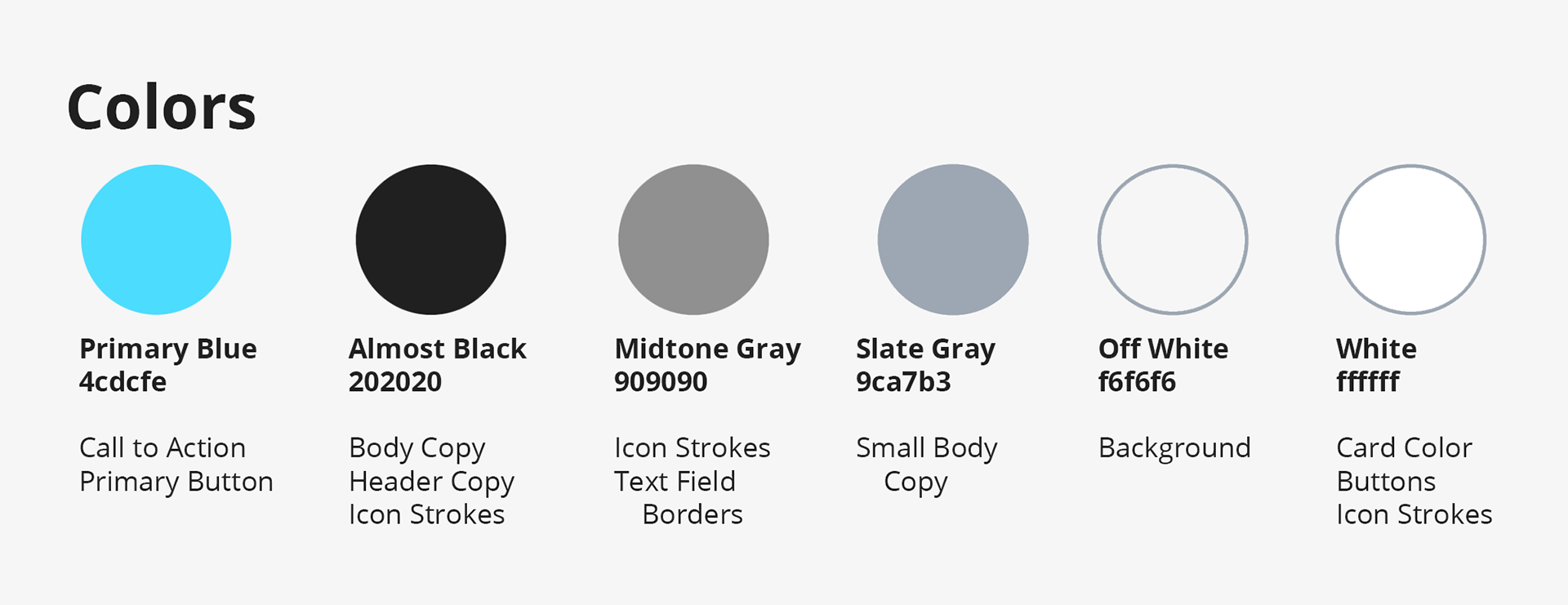
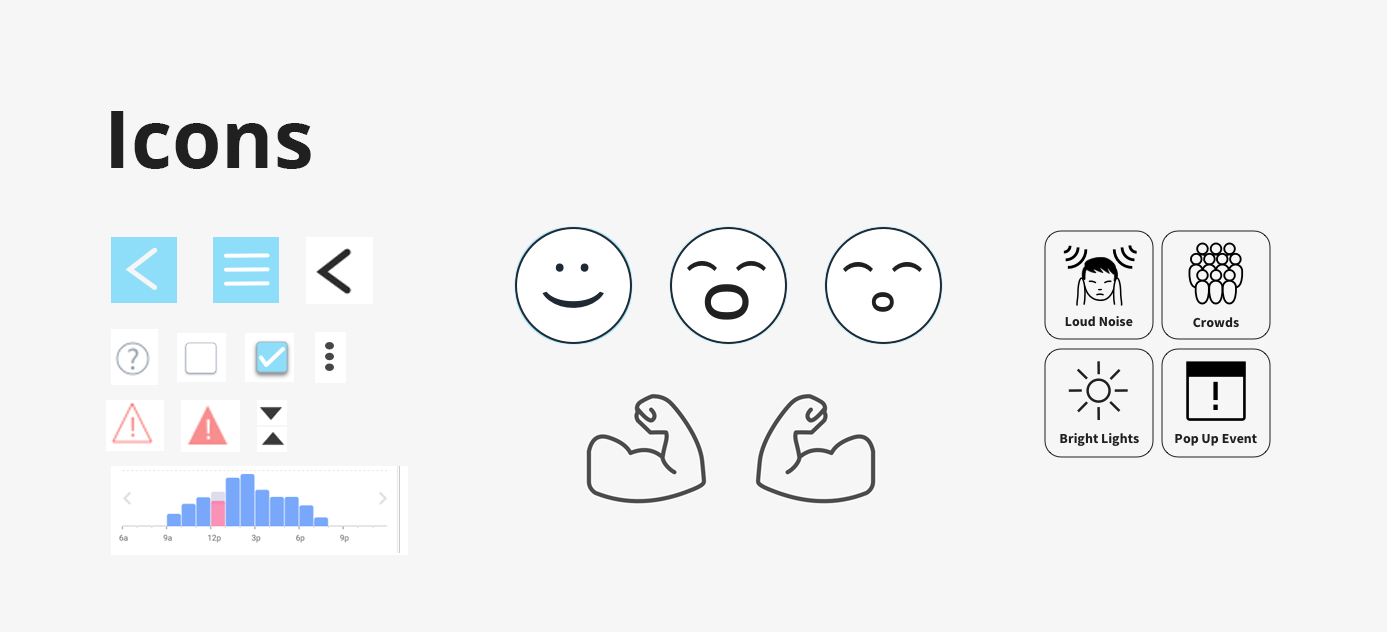
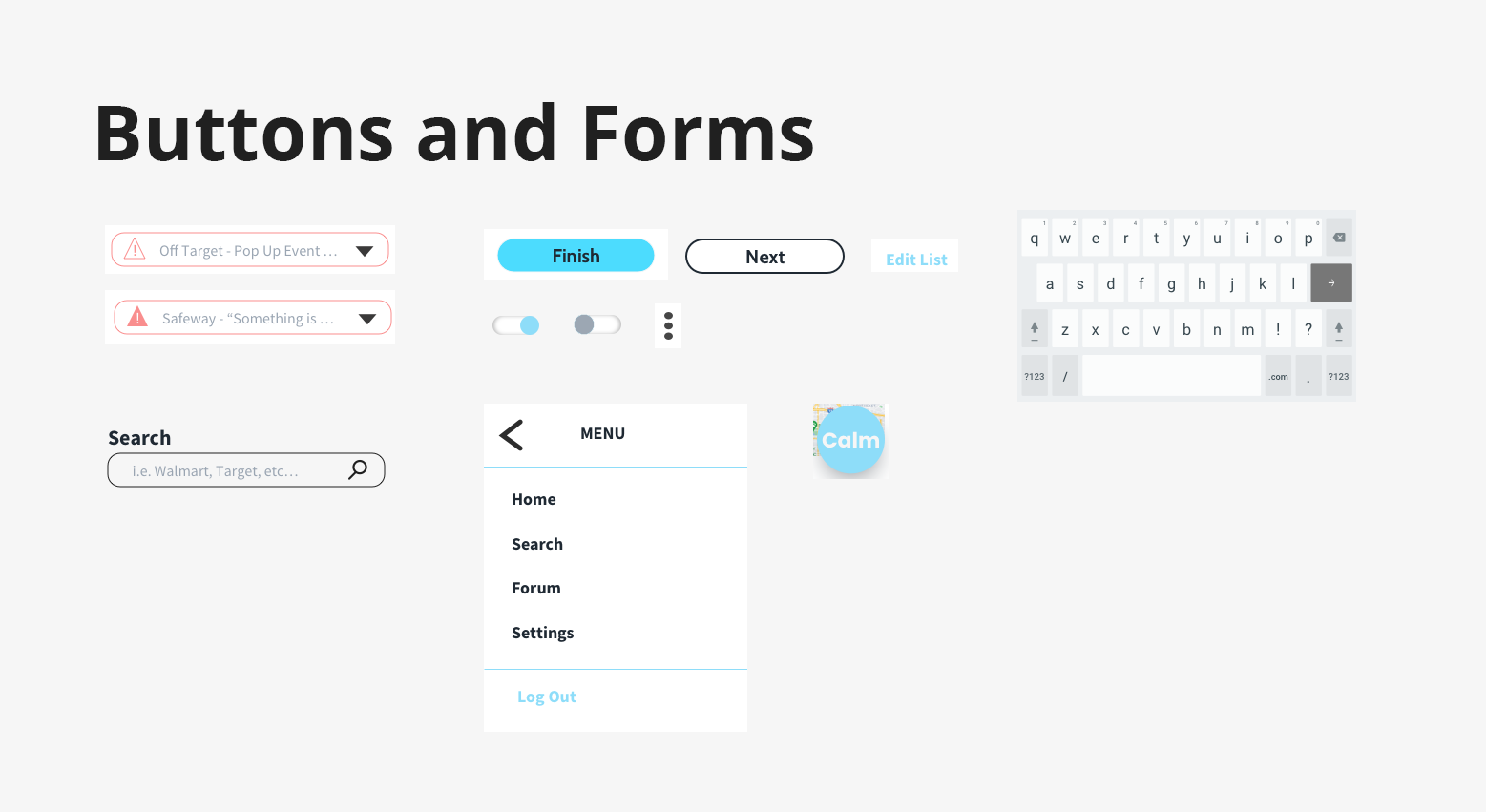
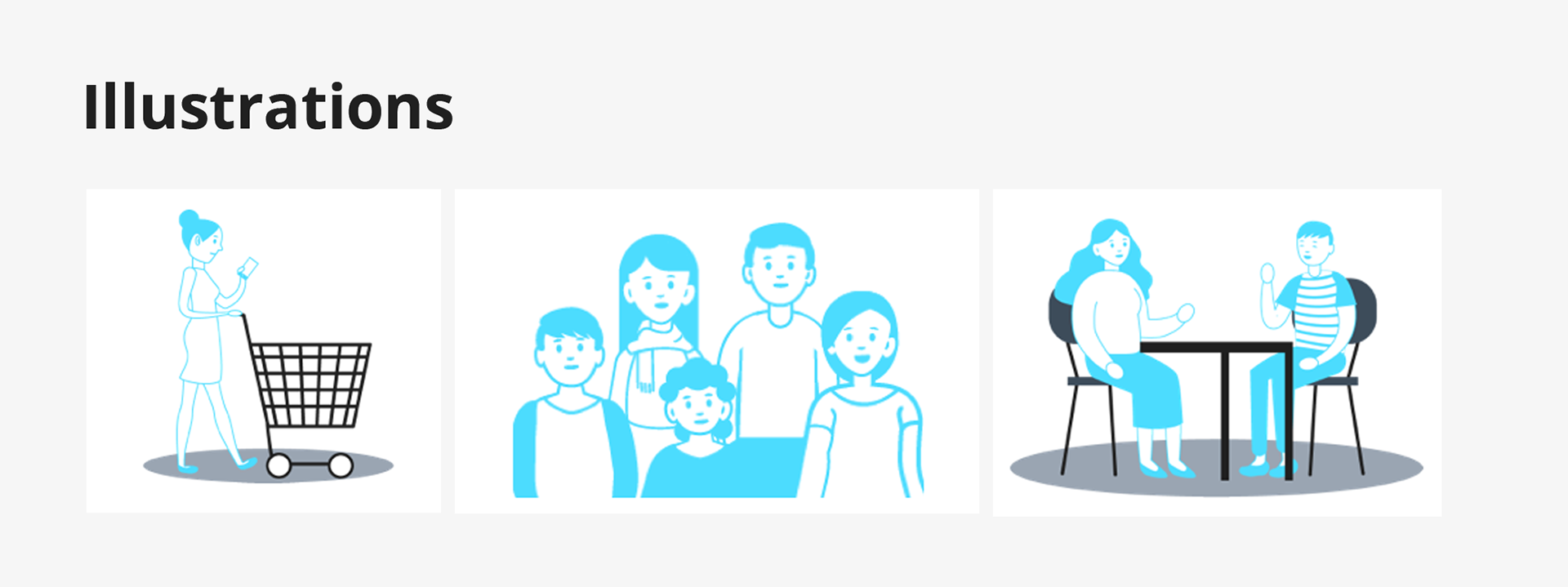
Final Product
Calm Button Feature
With thorough research and diving into some psychology, I implemented a feature that acts somewhat like a panic button. This floating button (only available on the Need Help side of the app) is available on all screens if the user needs to calm themselves down.
It offers 3 different calming techniques to help the user in a moment of panic.
With thorough research and diving into some psychology, I implemented a feature that acts somewhat like a panic button. This floating button (only available on the Need Help side of the app) is available on all screens if the user needs to calm themselves down.
It offers 3 different calming techniques to help the user in a moment of panic.
This technique involves the user breathing with the rhythm of the blue outer circle. This will alleviate the symptoms of anxiety and/or panic attacks.
This next technique is called, “Progressive muscle relaxation (PMR”)”. PMR, is an exercise that anyone can use to alleviate disturbing and disruptive emotional symptoms such as anxiety. This is helpful in moments of high stress or nervousness, and even can help someone get through a panic attack.
This technique is called a “Distraction List”. So a user is given a numbered form for them to fill out. Each screen counts down from 5 things you see, 4 things you hear, 3 things you touch, 2 things you smell and 1 thing you can taste.
Distracting works because it helps create a little space between the user and whatever is upsetting them, which also helps alleviate anxiety and a panic attack.
Distracting works because it helps create a little space between the user and whatever is upsetting them, which also helps alleviate anxiety and a panic attack.

